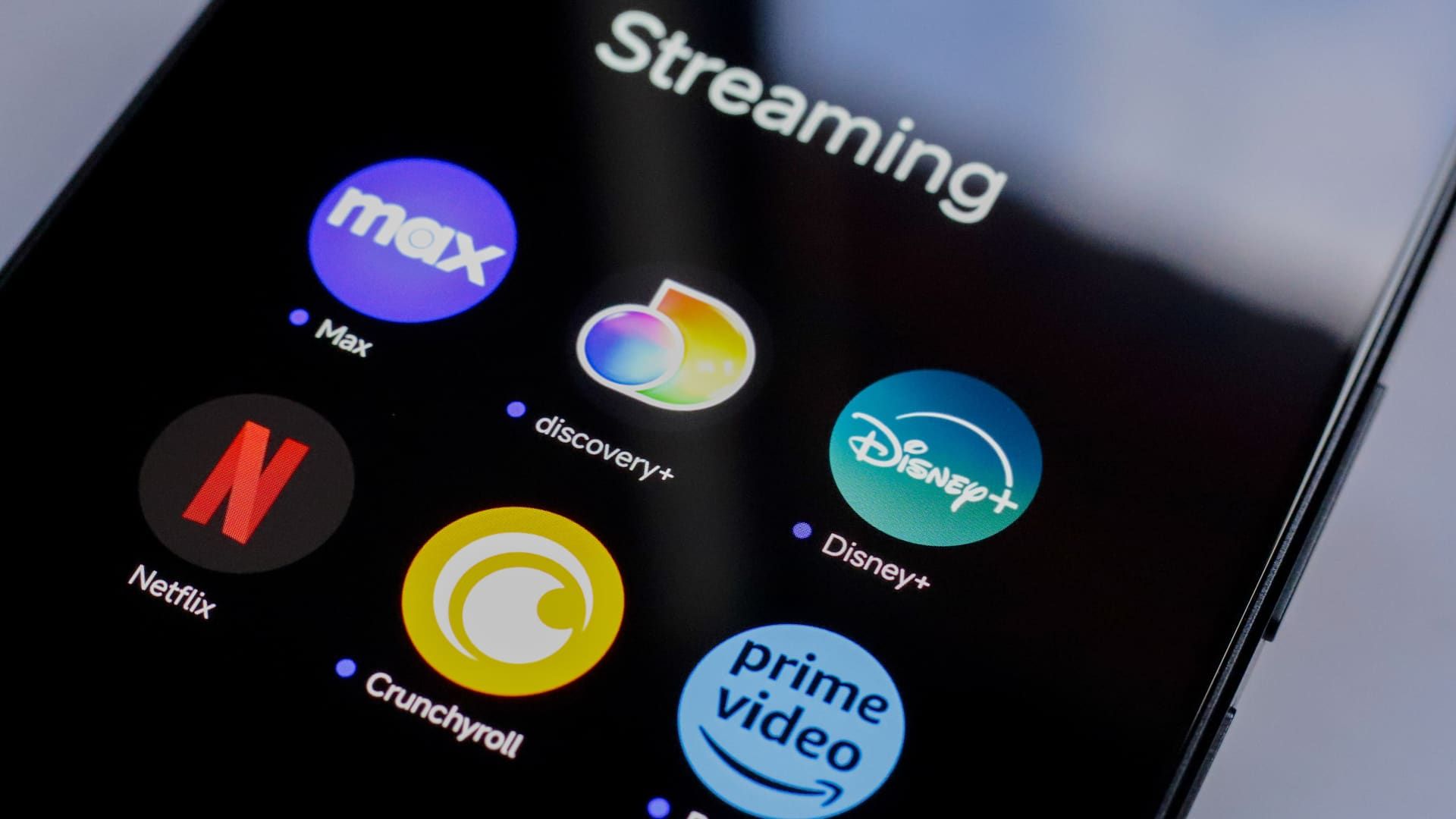Jaqué Silva | SOPA Images | Light Rocket | Fake Images
Streaming is finally starting to pay off for media companies, but there's a problem: To get there, consumers face higher subscription costs and increasingly frequent price increases.
Traditional media companies entered the streaming market with the goal of gaining subscribers and competing with category leaders. Netflix As traditional cable TV packages lose customers, they are now looking to get a return on their content investments. Disney, Warner Bros. Discovery and others aim to make money through streaming.
Its strategies include launching cheaper, ad-supported models, rolling out platform bundles and cracking down on password sharing, but the price increases have shown more immediate results in terms of profitability.
“The years of prioritizing user growth with low prices are over,” said Mike Proulx, vice president and research director at Forrester.
Disney said last week that its combined streaming services — Disney+, Hulu and ESPN+ — were profitable for the first time during its fiscal third quarter. While the company did add new subscribers, that milestone was largely due to price increases.
Chief Executive Bob Iger said during an earnings call that Disney has “earned” its market share thanks to the company's creative contributions and product improvements. He noted that with past price increases, the company has not seen a “significant” amount of customer departures.
“When we look at our portfolio… we see growth in consumption and popularity of our offerings, which gives us the pricing leverage that we believe we have,” Iger said.
Rising prices
Major streaming services have experienced a number of price increases and changes over the past few years.
In the past five months alone, four streaming platforms have announced price increases: Discovery's Warner Bros. Max, from Comcast Peacock, Disney and Paramount.
Before reporting its results, Disney announced it will raise streaming prices by $1 to $2 per month for Hulu, Disney+ and ESPN+.
Similar to Disney, Paramount Global said last week on its quarterly earnings conference call that its streaming business, centered on the flagship Paramount+ service, has reached profitability.
Paramount noted on the call that global average revenue per user grew 26% for Paramount+, reflecting a price increase during the third quarter of 2023. Meanwhile, additional price increases for Paramount+ go into effect this month, and the company expects to see a financial impact from that during the fourth quarter.
While Comcast’s Peacock offered a limited-time annual subscription for $19.99 ahead of the Olympics, the company raised the monthly cost of the ad-supported service by $2 this summer, marking its second price increase of the year. Warner Bros. Discovery also raised the cost of ad-free Max by $1 per month in June.
“For a decade in the streaming world, there’s been an enormous amount of quality content offered at a price well below fair market value. And I think that’s in the process of being corrected,” Warner Bros. Discovery CFO Gunnar Wiedenfels said at an industry conference last year. “We’ve seen price increases across virtually the entire competitive spectrum.”
When Disney reported revenue growth in its most recent quarter, it was driven primarily by higher subscription prices, Forrester's Proulx said, as user growth and advertising revenue alone won't sustain profitability.
That puts the burden of revenue growth to some extent on the shoulders of consumers, he said. And users are feeling the pressure.
In a survey of 3,000 consumers, 90% agreed that streaming video subscriptions are increasing in price more frequently than in the past, according to Hub Entertainment Research.
Advertising support
Image Alliance | Image Alliance | Getty Images
Meanwhile, companies are pushing consumers toward ad-supported tiers, which are often cheaper than ad-free streaming, in a bid to attract more advertisers, Proulx said.
And many of those consumers are choosing that option.
“We expect significant growth going forward as more subscribers opt into the ad-limited tier, which accounted for over 40% of global gross additions last quarter,” Warner Bros. Discovery's Wiedenfels said during last week's earnings call. Ad Lite refers to Max's most affordable subscription tier.
Media companies have noticed that streaming advertising has grown. Warner Bros. Discovery said during its second-quarter earnings call that streaming advertising revenue doubled compared to the previous year.
Similarly, advertising revenue grew 16% in Paramount's second quarter, driven by Paramount+ and Pluto TV, the company said.
According to a study by Antenna, 75% of Peacock subscribers were in the ad-supported subscription tier as of February of last year. At the time, that was the largest share of all major streaming services, followed by Hulu at 57% and Paramount+ at 43%. Streaming companies typically don’t disclose the breakdown of subscriptions by tier.
“The advertising tier is attractive to all of these companies because they can get as much ad revenue as they can get from the subscription fee at the advertising tier,” said Tim Nollen, senior media technology analyst at Macquarie.
Netflix executives have been unhappy with advertising for some time, but changed their stance in 2022 following a slowdown in subscriber growth. The company also recently eliminated its cheapest, ad-free basic plan, leaving consumers with the choice of a $6.99 ad-supported option or two ad-free plans that cost $15.49 or $22.99.
Netflix co-CEO Ted Sarandos said on the company’s second-quarter earnings call that the ad-supported tier makes Netflix more accessible to users because of the low entry price. As for both tiers, when it comes to raising prices, Sarandos said Netflix aims to increase value and engagement before subscribers pay more.
According to Forrester research, in general, streaming consumers looking to save money are willing to tolerate ads in order to pay lower subscription fees. However, ad levels are not immune to price increases. Disney+, for example, is now raising prices for its ad-supported plan.
Disney took a unique approach to launching its ad-supported tier in December 2022, giving existing subscribers the option to pay an additional $3 per month or accept ads. Nearly 95% of Disney+ premium plan subscribers paid to keep streaming ad-free, according to Antenna.
Warner Bros. Discovery said on an earnings call that it suffered fewer customer churns than expected in July following its $1 price increase on ad-free streaming.
“Until there is a mass exodus of users, Disney (and others) will continue to raise prices,” Proulx said.
Keep subscribers
Westend61 | Westend61 | Fake Images
There's one key thing that's working in streamers' favor: Across all platforms, users are generally unwilling to sacrifice desired content even as costs rise, said Hub Entertainment Research founder Jon Giegengack.
However, the total cost of streaming can sometimes exceed that of cable for certain consumers because the content they consume is spread across different platforms, according to Proulx.
In response, companies like Disney, Paramount and Warner Bros. Discovery have opted to bundle their services into a single, discounted offering. In cases where streaming is no longer cheaper than traditional TV, bundles allow consumers to save money while accessing TV content across different services, according to Proulx.
For providers, bundles are an opportunity to boost revenue because they expect fewer people to cancel their combined subscriptions than standalone ones, Nollen said.
“The new world of streaming is not as lucrative as the old world of pay TV was,” Nollen said. “Everyone has realized that and is coming up with ways to at least try to improve their lot, and bundled services are one of them.”
Streamers are also increasing their total user count by cracking down on password sharing. Last year, Netflix alerted members that accounts can only be shared within a single household, and Disney made a similar announcement earlier this year. Warner Bros. Discovery will soon follow suit.
But as consumers continue to face rising subscription costs, Giegengack points to broader competition in streaming. While low subscription prices initially helped other streaming services grow subscriber numbers, he said they can't afford to continue doing so.
“The amount of money people have been able to pay, the volume of content they're getting so far, it's an absurdly good deal and I don't think it's sustainable,” Giegengack said.
Disclosure: Comcast owns NBCUniversal, the parent company of CNBC, and is a co-owner of Hulu. NBCUniversal also owns NBC Sports and NBC Olympics, which holds the U.S. broadcast rights to all Summer and Winter Games through 2032.









